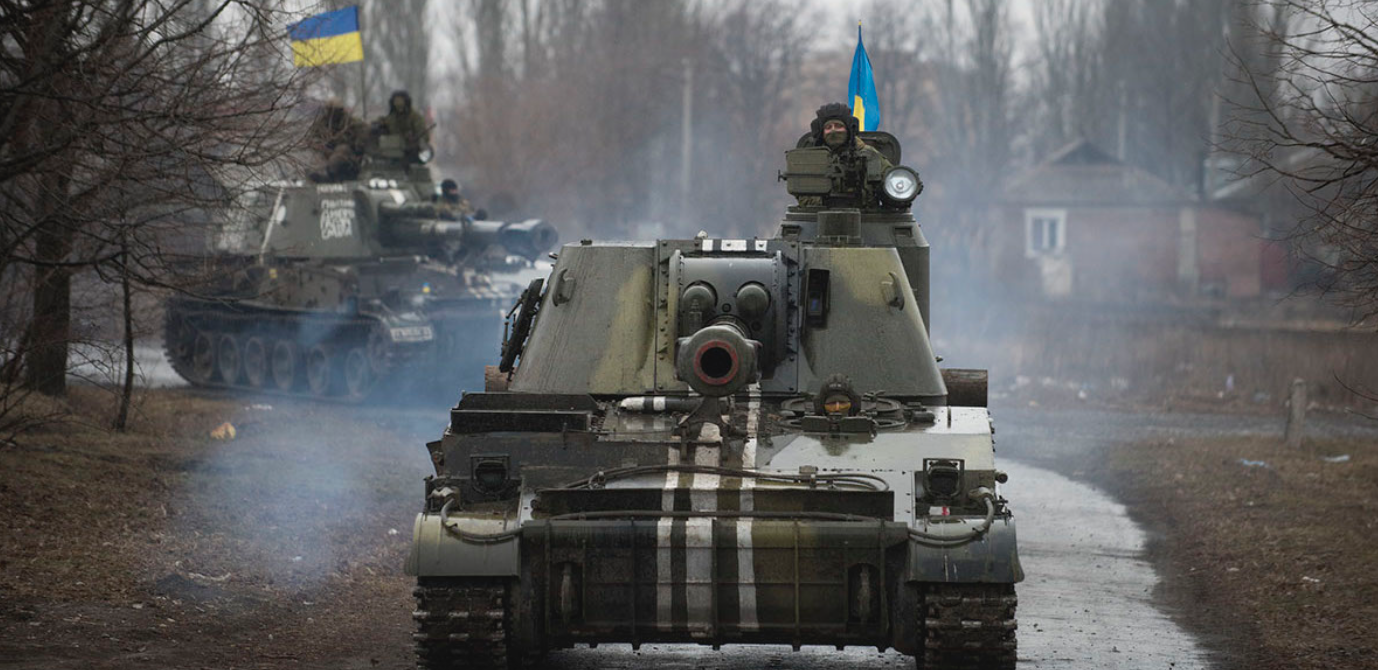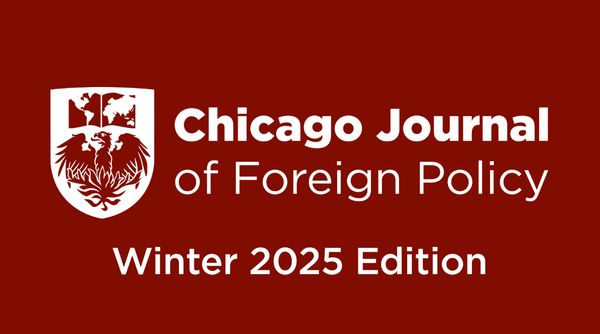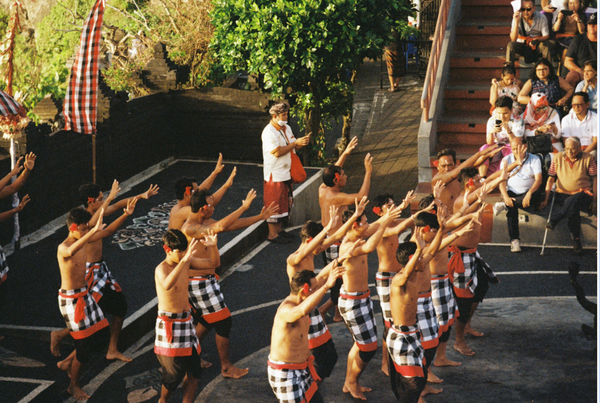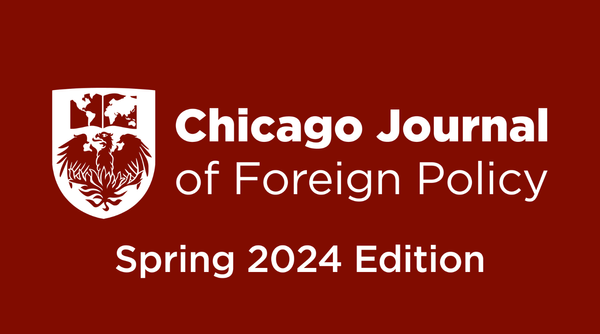A Comparison of Past Russian Involvement in Georgia and Ukraine

by ISAAC TRONCOSO
Whether one points to an interconnected economic system which binds together the fates of faraway nations, ideological winds contradicting a historical narrative of human progress towards globalization, the fracturing of states’ spheres of influence, or an arguable decrease in relevance of states themselves, it is clear that we live in an age of uncertainty. This rise in uncertainty has been especially reflected by the Russian invasions of Georgia and Ukraine – challenges to the post-Soviet international order built by NATO and framed by a desire to overcome ethnic squabbles through the establishment of Western democratic values. As such, the forces of bellicose, nostalgic nationalism have come roaring back once more, as Russia attempts to reclaim its former respect in a world under threat of nuclear war – but one with Russia at the fore nonetheless. To understand this phenomenon and prepare for future resurgences of such nationalism and uncertainty, we must examine Russia’s past involvement with Georgia and Ukraine – specifically its various motivations and tactics.
Both Georgia and Ukraine share a common history under Russian dominance during the Soviet period, marked by persistent separatist sentiment. Georgia had been a Soviet satellite of integral importance, both as a gateway to the Caucasus’ vast oil reserves and due to its enormous mineral resources, essential to industries such as metallurgy, steel production, as well as oil and natural gas exploration. Further, Georgia contains large deposits of silver, zinc, barite, coal, and marble. [1]
However, Georgia has always been more culturally and geographically distinct from Russia than Ukraine. While both have their own language, the Caucasus mountains physically separate Georgia and, as a result, contribute to a distinct national identity also forged from the over fifty ethnic groups that reside in the Caucasus region. [2] As such, tensions have repeatedly arisen between Georgia and Russia in the forms of public demonstrations against Soviet rule, cultural critique, and occasionally armed conflict. While Russian rule of Georgia had been historically contentious, notably with a revolt in 1924, a broader cultural rift developed during the 1950s period of de-Stalinization. This began when Soviet premier Nikita Khrushchev shocked the West and much of his own nation by acknowledging and condemning the genocides, mass deportations, and forced labor of Joseph Stalin’s rule in a speech read only to Communist party officials. [3]However, while this period of the ‘Khrushchev thaw’ was marked by brief moments of Communist self-reflection, the release of thousands of political prisoners, and a liberalization of censorship laws, a rejection of Stalinist policies soon grew to become a greater rejection of the Georgian culture from which he emerged. As a result, on March 4,1956 students gathered in the capital of Tbilisi to observe the third anniversary of Stalin’s death and began to confront the surrounding police.[4] Similar demonstrations broke out in other Georgian cities such as Gori, Kutaisi, Rustavi, Sukhumi, and Batumi, until they grew to encompass 70,000 people. While protests began in pro-Soviet fashion, nostalgic for the days of Stalin’s rule, the focus soon shifted to a nationalistic celebration of Georgian identity, as participants waved flags of pre-Soviet Georgia and reportedly distributed leaflets advocating for secession, until Soviet troops cracked down in a matter of several days – resulting in student deaths. This first expression of Georgian nationalism would be later reflected in the 1978 Tbilisi demonstrations that arose in response to Soviet attempts to elevate Russian to equal status as another official state language in Georgia.
During Khrushchev’s administration and rising through the 1970s, Russia had been enacting plans to simultaneously liberalize the Soviet Union’s policies against Western cultural imports and also Russify the country’s constituent states. As a result of the former initiative, a wave of rock music, jazz, American/Western European fashion trends, and a literary renaissance destabilized the Soviet way of life. This rapid influx of Western culture, combined with the emergence of a younger generation which had no memory of the ruthless crackdowns on dissidents characteristic of the Stalinist period, and visible inconsistency in Soviet political -ideology, fostered the necessary preconditions for protest. [5] As a result, although the Soviet Union also attempted to become more culturally homogenous in the face of a changing cultural climate, their increasingly liberal policies made this difficult. Not only did the allowance of free expression have the inherent effect of creating intellectual diversity, but more specifically, but it encouraged the investigation of people’s national, ethnic, and cultural identities – leading to a revival of Georgian nationalism in the 1970s. [6] This force had been previously stymied since 1956, when the Soviet Union cracked down on protest movements in Georgia, Poland, and most famously in the Hungarian Revolution. Additionally, Georgia, Armenia, and Azerbaijan had provisions to allow a state language other than Russian, but when a new Soviet constitution was being adopted in 1977-78, and had to be ratified in each republic, Russian authorities used this as an opportunity to undo the legislation that allowed the Georgian, Armenian, and Azerbaijani languages to be used in an official capacity. However, this resulted in demonstrations across Georgia that involved 20,000 protestors at its height. The movement was ultimately successful in keeping Georgian as the sole state language, which would embolden nationalists until the republic ultimately declared its independence in 1989. The development of Ukrainian nationalism would follow a similar pattern – emanating from years of harsh Russian domination, involving deep ethnic tensions, and gaining strength in response to the post-Stalin period of liberalization and attempted Russification.
Since the 1930s and before, Russian rule over Ukraine had manifested itself in the form of mass genocides, shipping political dissidents to the Gulag forced labor prison archipelago, and the Holodomor – a man-made famine which resulted in the deaths of about 7 million Ukrainians. [7] Additionally, during the Stalinist period, there were intense attempts at Russification of Ukraine. These methods included purging or exiling Ukrainian intellectuals, concerted efforts to decrease use of the Ukrainian language, and favoring ethnic Russians for political positions. Additionally, Russian authorities often assigned the Russian Orthodox church administrative control over regions in Belarus and Ukraine, over Roman Catholic or Jewish denominations. Following de-Stalinization, however, Ukrainian Party officials began to openly criticize the legacy of Stalin, Ukrainians once again came to dominate political offices, and Khrushchev attempted to show goodwill through the 1954 transfer of Crimea to Ukraine. [8] This thawing of Ukrainian-Russian relations further took shape as authorities freed those convicted of crimes against the state during or just after World War II. While Ukraine experienced such a warming of relations with Russia until just before the collapse of the Soviet Union, in a similar position as Georgia, tensions would flare again in the post-Soviet period as Ukraine searched for its place between East and West.
The post-Soviet period was characterized by pendulum-like shifts as Georgia and Ukraine swung between the East and West – both significantly dependent on Russia for energy but maintaining the long-term policy goal of accession to the European Union and NATO. This process began as Ukraine took advantage of the political space created by the fall of the Soviet Union to make numerous overtures to the West, and continued to do so intermittently in the years following Russia’s 1998 financial crisis. Although the two maintained cooperation on core security issues such as the Russian Black Sea Fleet, cracks in this Western shift began to show in the mid-2000s, and it ultimately broke down with the election of Viktor Yanukovych in 2010. [9] The presence of large numbers of ethnic Russians in the country, combined with cultural similarities and allegations of corruption against the pro-Western candidate, Yulia Tymoshenko, resulted in Yanukovych’s victory – and also put on full display the deep political divide between eastern and western Ukraine. While the two countries signed the 1997 Treaty on Friendship, Cooperation and Partnership, Ukrainian-Russian relations during the 1990s were characterized by cautious cooperation, at times due to coercion from oil dependence, and by Ukraine’s refusal to enter into a post-Soviet commonwealth. [10] At the same time, Ukraine displayed a friendly attitude toward the West – joining the Organization for Security and Cooperation in Europe (OSCE) in 1992, subsequently becoming a member of the North Atlantic Cooperation Council in the same year, and entering into a series of further agreements through the decade. This continued until 2010, when after Yanukovych’s election, the Ukrainian parliament’s majority party formally took the goal of NATO accession off their platform and proceeded to move closer to Russia.[11] After the Russian invasion of 2014, however, Ukraine unsurprisingly reversed its 2010 shift – signing the Ukrainian-European Union Association Agreement, and abolishing their non-aligned status within months of the incursion.
Georgia, perhaps due to its isolated geopolitical position and smaller size compared to Ukraine, has had a more consistently antagonistic relationship to Russia during the post-Soviet period – alternating between trade wars, the brink of conflict, and war itself. Relations between Georgia and Russia through the 1990s and early 2000s were stable relative to later developments, albeit strained due to an ongoing conflict in the western Abkhazia region that borders Russia on the Black Sea coast. After intermittent flares of violence in 1992 and 1998, Abkhazian separatists and Georgian government officials met to discuss terms in July of 2006. [12] However, earlier that year, tensions between Georgia and Russia had been mounting rapidly. In March, Russia banned the import of wine from Georgia, a tactic also employed on Moldova, to discourage both countries from seeking closer ties to the EU. [13]That May, Georgia also completed the Baku-Tbilisi-Ceyhan oil pipeline, which pumps approximately 1 million barrels of oil per day into the country from Azerbaijan, giving the nation some degree of energy independence from Russia.[14] These factors, combined with Russian economic and visa support of Abkhazian separatists, set the stage for tensions between separatists and the Georgian government, which led the negotiations to collapse, and ultimately resulted in an armed standoff.
From the history of Russian involvement in Ukraine and Georgia, two things are abundantly clear – that Russia places a high priority on retaining influence in its traditional eastern sphere of influence, and will dispense with traditional norms of international relations to do so. With an incoming president who oscillates in his support of NATO, and whose rise came about in part as a backlash to the optimism engendered from the collapse of the Soviet Union in the 1990s, we must, at very least, hope that Trump will pursue a Nixon-esque style of diplomacy, in which his status as a potentially irrational actor in fact gives more credibility to threats of American force. Further, a rising tide of isolationism in the United States will hopefully spur the European Union to adopt increasingly integrationist policies, and develop a military force more autonomous from American support. While the departure of Great Britain, a perpetually distant and reluctant partner, and a more clear and present Russian threat may speed the Union’s integration, this is contingent upon its ability to survive the cracks created by its members’ waves of nationalism. Additionally, as our time begins to more closely resemble the era of realist diplomacy in the late 19th century, our leaders should look to the history of World War I. As such, they should seek to walk a balance between drawing certain necessary lines in the sand, yet remaining wary of being forced into another catastrophic war as the result of rigid, sequential diplomatic machinery. Reforms undoubtedly must be made to deepen the ties of NATO and the EU before diluting them through the addition of further nations, and shore up our credibility before using it for more short-term gains at a long-term cost.
[1] Anonymous, “Georgia’s Natural Resources,” Georgia’s Natural Resources | Georgia Department of Natural Resources, accessed January 15, 2017, http://www.gadnr.org/resources.
[2] The Editors of Encyclopædia Britannica, “Caucasian peoples,” Encyclopædia Britannica, December 07, 2001, accessed January 26, 2017, https://www.britannica.com/topic/Caucasian-peoples.
[3] “Khrushchev’s secret speech,” Encyclopædia Britannica, accessed January 26, 2017, https://www.britannica.com/event/Khrushchevs-secret-speech.
[4] “The Incidents in Georgia, March 1956,” Seventeen Moments in Soviet History, September 01, 2015, , accessed January 27, 2017, http://soviethistory.msu.edu/1956-2/khrushchevs-secret-speech/khrushchevs-secret-speech-texts/the-incidents-in-georgia-march-1956/.
[5] “The Thaw,” Encyclopædia Britannica, accessed January 15, 2017, https://www.britannica.com/topic/the-Thaw-Soviet-cultural-history.
[6] Kalipada Deb, Soviet Union to Commonwealth: transformation and challenges (New Delhi: M D Publications, 1996), 224.
[7] “Ukraine’s Genocide by Famine,” National Review, December 18, 2013, accessed January 30, 2017, http://www.nationalreview.com/article/363533/ukraines-genocide-famine-alec-torres.
[8] “The Gift of Crimea,” Seventeen Moments in Soviet History, December 01, 2015, , accessed January 30, 2017, http://soviethistory.msu.edu/1954-2/the-gift-of-crimea/.
[9] Anne Applebaum, “What Viktor Yanukovych’s election victory means for Ukraine.,” Slate Magazine, February 08, 2010, , accessed January 30, 2017, http://www.slate.com/articles/news_and_politics/foreigners/2010/02/orange_crush.html.
[10] Nathan K. Finney, “Crimea: Russia is harvesting the seeds sown in the 1990s,” Medium, April 12, 2015, accessed January 30, 2017, https://medium.com/the-bridge/crimea-russia-is-harvesting-the-seeds-sown-in-the-1990s-54892d22ccbb#.vsdda9w2y.
[11] “Ukraine’s parliament votes to abandon Nato ambitions.” BBC News. June 03, 2010. Accessed January 30, 2017. http://www.bbc.com/news/10229626.
[12] “Georgian President’s Envoy Urges Direct Abkhaz Talks,” RadioFreeEurope/RadioLiberty, accessed January 30, 2017, http://www.rferl.org/a/1066975.html.
[13] C. J. Chivers, “A Russian ‘Wine Blockade’ Against Georgia and Moldova,” The New York Times, April 05, 2006, , accessed January 30, 2017, http://www.nytimes.com/2006/04/06/world/europe/06russia.html.
[14] “Startup of the Baku-Tbilisi-Ceyhan Pipeline:,” Startup of the Baku-Tbilisi-Ceyhan Pipeline: – Turkey’s Energy Role – The Washington Institute for Near East Policy, accessed January 30, 2017, http://www.washingtoninstitute.org/policy-analysis/view/startup-of-the-baku-tbilisi-ceyhan-pipeline-turkeys-energy-role.
Works Cited
Anonymous. “Georgia’s Natural Resources.” Georgia’s Natural Resources | Georgia Department of Natural Resources. Accessed January 15, 2017. http://www.gadnr.org/resources.
The Editors of Encyclopædia Britannica. “Caucasian peoples.” Encyclopædia Britannica. December 07, 2001. Accessed January 15, 2017. https://www.britannica.com/topic/Caucasian-peoples.
“Khrushchev’s secret speech.” Encyclopædia Britannica. Accessed January 15, 2017. https://www.britannica.com/event/Khrushchevs-secret-speech.
“The Incidents in Georgia, March 1956.” Seventeen Moments in Soviet History. September 01, 2015. Accessed January 17, 2017. http://soviethistory.msu.edu/1956-2/khrushchevs-secret-speech/khrushchevs-secret-speech-texts/the-incidents-in-georgia-march-1956/.
“The Thaw.” Encyclopædia Britannica. Accessed January 15, 2017. https://www.britannica.com/topic/the-Thaw-Soviet-cultural-history.
Deb, Kalipada. Soviet Union to Commonwealth: transformation and challenges. New Delhi: M D Publications, 1996.
“Ukraine’s Genocide by Famine.” National Review. December 18, 2013. Accessed January 30, 2017. http://www.nationalreview.com/article/363533/ukraines-genocide-famine-alec-torres
“The Gift of Crimea.” Seventeen Moments in Soviet History. December 01, 2015. Accessed January 30, 2017. http://soviethistory.msu.edu/1954-2/the-gift-of-crimea/.
Applebaum, Anne. “What Viktor Yanukovych’s election victory means for Ukraine.” Slate Magazine. February 08, 2010. Accessed January 30, 2017. http://www.slate.com/articles/news_and_politics/foreigners/2010/02/orange_crush.html.
Finney, Nathan K. “Crimea: Russia is harvesting the seeds sown in the 1990s.” Medium. April 12, 2015. Accessed January 30, 2017. https://medium.com/the-bridge/crimea-russia-is-harvesting-the-seeds-sown-in-the-1990s-54892d22ccbb#.vsdda9w2y.
“Ukraine’s parliament votes to abandon Nato ambitions,” BBC News, June 03, 2010, , accessed January 30, 2017, http://www.bbc.com/news/10229626.
“Georgian President’s Envoy Urges Direct Abkhaz Talks.” RadioFreeEurope/RadioLiberty. Accessed January 30, 2017. http://www.rferl.org/a/1066975.html.
Chivers, C. J. “A Russian ‘Wine Blockade’ Against Georgia and Moldova.” The New York Times. April 05, 2006. Accessed January 30, 2017. http://www.nytimes.com/2006/04/06/world/europe/06russia.html.
“Startup of the Baku-Tbilisi-Ceyhan Pipeline:.” Startup of the Baku-Tbilisi-Ceyhan Pipeline: – Turkey’s Energy Role – The Washington Institute for Near East Policy. Accessed January 30, 2017. http://www.washingtoninstitute.org/policy-analysis/view/startup-of-the-baku-tbilisi-ceyhan-pipeline-turkeys-energy-role.





